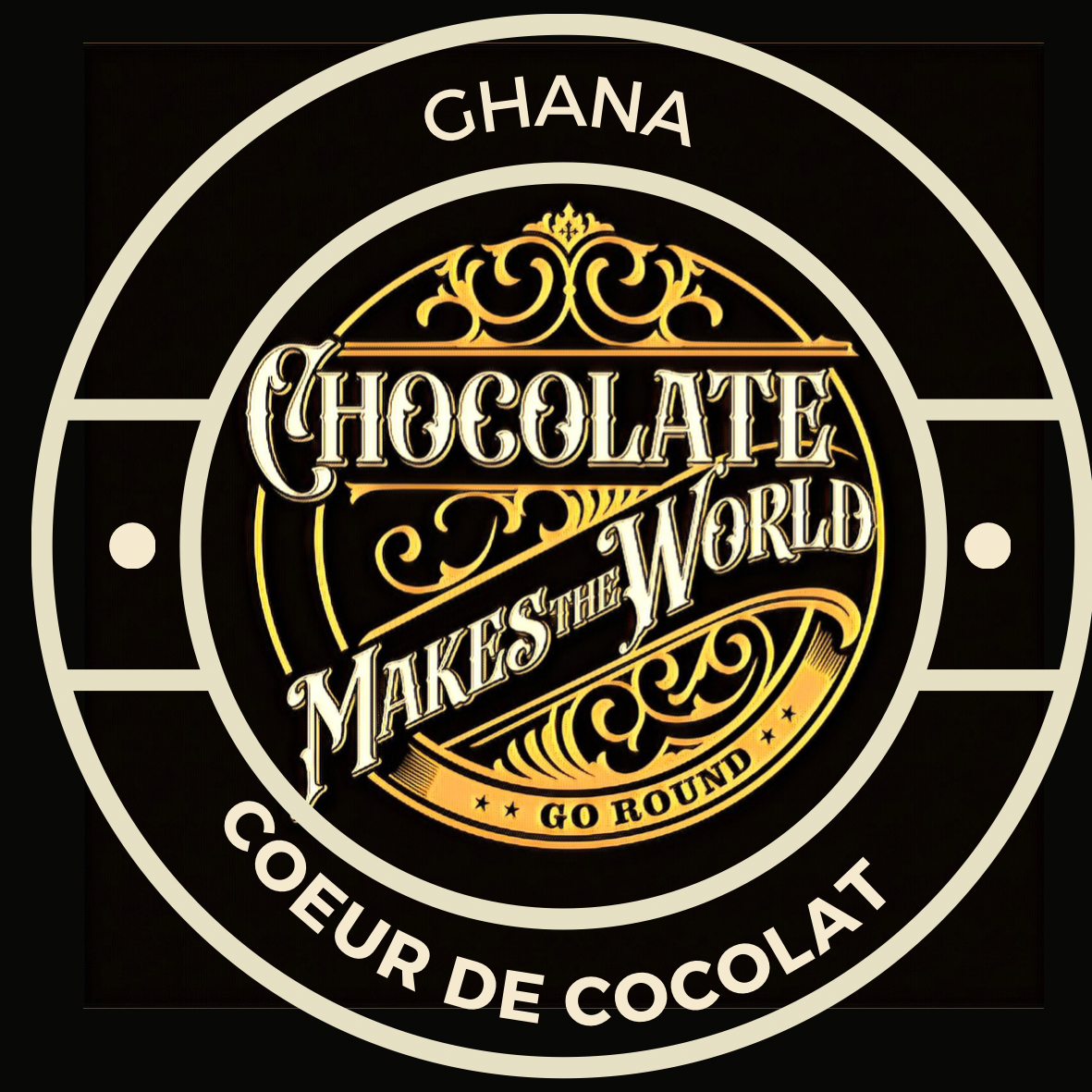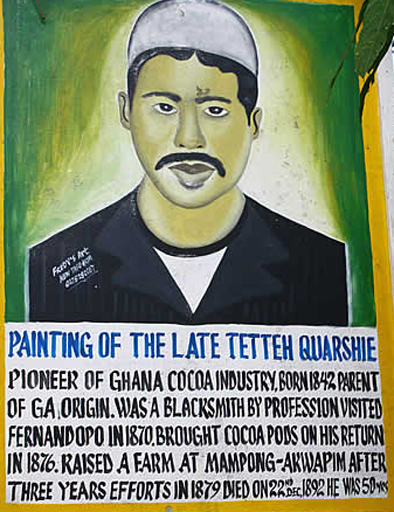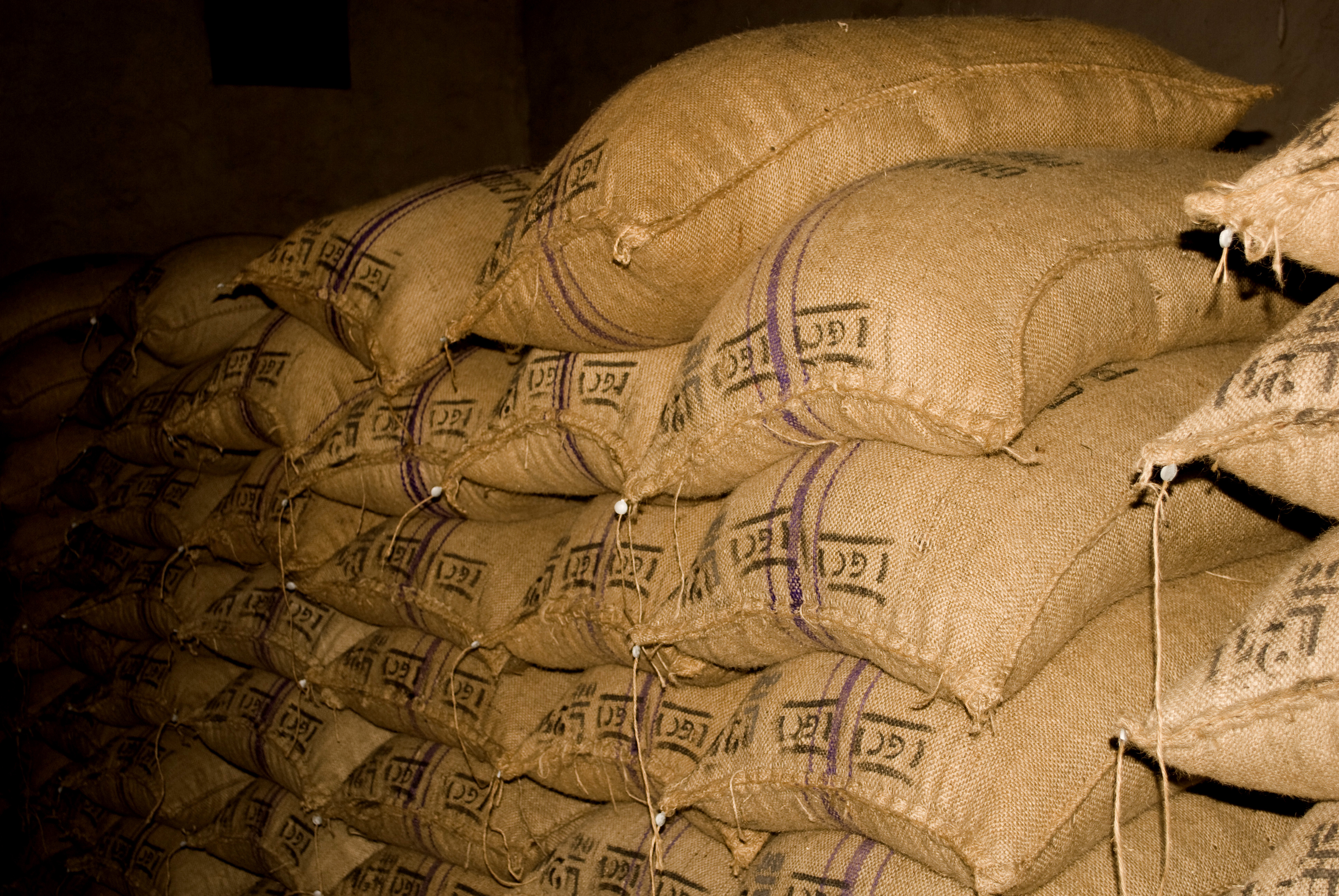
I joined the company as a business development manager and chocolatier, but my main role was selling chocolate to UK retailers and out of home.
As part of this role, I would often lead chocolate safaris visiting Ghana and taking clients and members of the press, or host cocoa farmers from Ghana during Fairtrade Fortnight 'Meet the Producers' tours, taking them to meet politicians and Fairtade supporters across the United Kingdom and Ireland, and helping them to explain the impact that trade justice has on the daily lives of cocoa farmers and their families.
By way of preparation for these meetings and presentations, I did a little deeper research into the history of cocoa in Ghana and as I have come to expect, there was an interesting and sometimes disputed legend to waiting to be unwrapped.

According to the most popular story, cocoa cultivation began in Ghana, around 1895 when Tetteh Quarshie, a blacksmith who had been working on the Spanish Island of Fernando Po (now Bioko) in Equatorial Guinea where there was farming of "slave-grown cocoa”, smuggled some Amelonado cocoa beans "in his pocket" when he returned to his own farm in the eastern region of Ghana.
Cocobod tell us records indicate Dutch missionaries also planted cocoa in the coastal areas of the then Gold Coast as early as 1815, and in 1857 Basel missionaries planted cocoa at Aburi.
We British also took the credit for its introduction when In 1886, Sir William Bradford Griffith, the Governor, arranged for cocoa pods to be brought in from São Tomé and Príncipe, to Aburi Botanical Gardens and then distributed out to farmers.
Around the same time, rumours of the brutal use of slave labour on the islands of São Tomé surfaced in 1901, and were later confirmed beyond doubt in 1903.
In response, WA Cadbury, on behalf of Cadbury Brothers, led a coalition of the British chocolate manufacturers in negotiations with the plantation owners and the Portuguese government.
Reforms were promised in 1903 and again in 1907, and it was the failure to put these reforms into effect which in March 1909 led to a boycott of Portuguese cocoa by the British manufacturers.
The coalition switched their purchases from Portuguese São Tomé to British colonial Ghana. Over the next sixty years Ghana became the world's leading cocoa producer, exporting between 30-40% of the world' s total output.
Due to the importance of cocoa in Ghana, both in terms of its effect over the lives of these cocoa farmers and to the Ghanaian economy, the government of the 1930s took over control of the industry.
 They set up a buying monopoly for all the cocoa produced in Ghana.
They set up a buying monopoly for all the cocoa produced in Ghana.
This body, first under British colonial control, and then the independent Ghanaian government, was intended to protect the farmers from volatile price fluctuations.
Whilst it failed to ensure more income to the farmers, they did get some additional help from the government body (now known as Cocobod) such as a Research Institute, subsidised fertilisers, and a Quality Control Division.
It's these services that, in part, have preserved Ghana's reputation for high quality cocoa.
In the late 1970s the world market price for cocoa plummeted by two thirds. Ghanaian cocoa farmers were getting less than 40% of the world market price from Cocobod, and so many stopped producing cocoa altogether.
The situation worsened after the droughts and accompanying bush fires of the early 1980s, and production in Ghana fell from a third of the world's total in 1972 to just 12% of total world production.
At this stage the World Bank and International Monetary Fund intervened with a Structural Adjustment Programme to "rescue" the economy.
This programme has had quite a negative effect on the lives of the farmers through the increase in the cost of living and farming inputs, but it did include a partial reform of the internal cocoa market.
.jpeg) The liberalisation process included granting private companies licenses allowing them to trade cocoa.
The liberalisation process included granting private companies licenses allowing them to trade cocoa.
There are currently around 1.6 million people involved in growing cocoa and many more in associated industries.
Cocoa is now cultivated in six regions in Ghana:
Western, Central, Brong Ahafo, Eastern, Ashanti and the Volta regions.
At its peak, cocoa accounted for around 66% of the country's foreign exchange that has now declined to about 35 -40%.
You can read how Ghana got so important in the chocolate world by clicking here
You can check out my first travel blog to Ghana by clicking here
Or learn more about adinkras click here
an introduction to Ghanaian food click here
Or chocolate safari to São Tomé and Príncipe by clicking here
